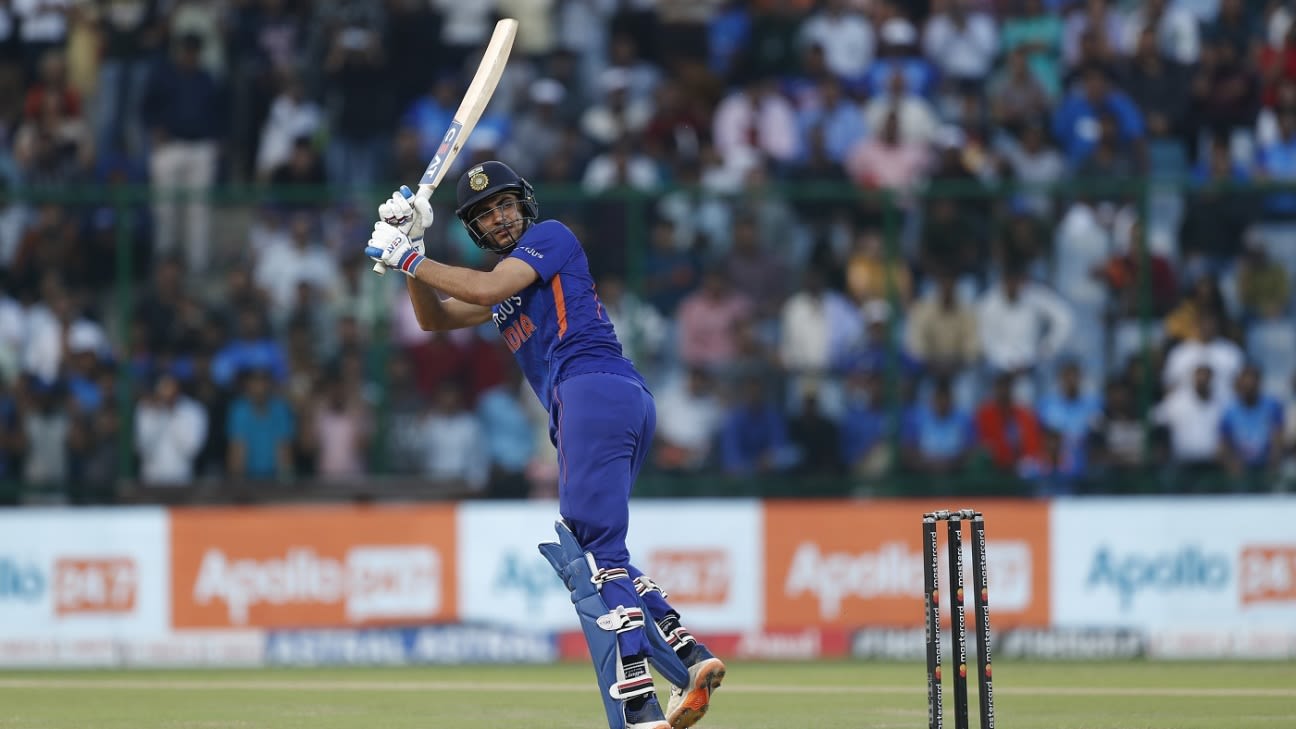
"I believe that the fewer dot balls you play in T20s, the better your strike rate will be", Gill told ESPNcricinfo ahead of Punjab's preliminary quarter-final match against Haryana in the Syed Mushtaq Ali Trophy. "Almost all batsmen have the same boundary percentage, but the ones with fewer dot balls have a higher strike rate. In T20s, you need to know what the bowler is trying to do. Those who bowl in a set way, you can dominate them.
"In England, you have to concentrate all the time," he said. "In those conditions, sometimes you feel you are set, but one spell can throw you off. It's not like that in India. Here once you reach 40-50, there is a pattern to bat. There is no such pattern in England. You could be batting at 110 and are still not set. No matter what score you are on, you have to be careful [on] every ball."
Gill has only played one of his 21 Test innings as a non-opener. In order to get more opportunities in the Indian Test side, he is willing to move down the order, too. While he is confident of his technique in red-ball cricket, Gill is aware of his concentration wavering when he is in flow.
"The red-ball format is very important to me," he said. "You get a different type of confidence when you do well in red-ball cricket. I am ready to bat wherever there's a vacant spot in the side.
"I don't think there is anything wrong with my technique. When your concentration is disturbed, or you relax a little bit, and then if a good ball comes, you miss it. I think it always happens with me that I am batting well and then I get out.
"There is no phase where I get out after I am constantly beaten. I think it [dismissal] is because of lapse in concentration. When a batsman is struggling, he is more alert. With me, sometimes it's the other way round. I fail to keep my concentration going when I'm batting well."















 Phone: (800) 737. 6040
Phone: (800) 737. 6040 Fax: (800) 825 5558
Fax: (800) 825 5558 Website:
Website:  Email:
Email: 






